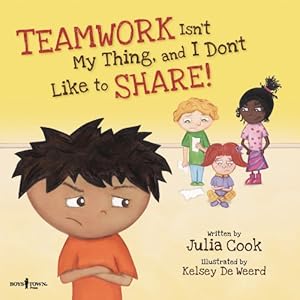Another book that has been highly successful is the Howard B. Wigglebottom series. This reinforces listening and positive decision making.

Finally, one more phenomenal resource I will share right now are books by Julia Cook. Her books teach on the behaviors and conflicts that so often come up among students in primary grades. They are even good for small groups in which you are working on social skills or individuals who need coaching in this area.
 In my classroom, we are having class meetings regularly. As a part of our class meetings, we focus on conflict management. There is a "problem box". Students are able to anonymously put a problem in the box. We pull out one problem, read it aloud, and "conflict manage" the problem to come up with a strategy as a class. As the students learn strategies, they will eventually have to try three strategies before they put the problem into the box. Problems will decrease throughout the year, students gain independent problem-solving skills, and the community grows stronger overall. The discussions really help students make connections and apply these strategies to real social issues in their lives. The box also gives students an outlet rather than running to tell you everything.
In my classroom, we are having class meetings regularly. As a part of our class meetings, we focus on conflict management. There is a "problem box". Students are able to anonymously put a problem in the box. We pull out one problem, read it aloud, and "conflict manage" the problem to come up with a strategy as a class. As the students learn strategies, they will eventually have to try three strategies before they put the problem into the box. Problems will decrease throughout the year, students gain independent problem-solving skills, and the community grows stronger overall. The discussions really help students make connections and apply these strategies to real social issues in their lives. The box also gives students an outlet rather than running to tell you everything.
Looks Like and Sounds LIke charts with pictures of students modeling have been a huge visual support for my students for all aspects of whole body listening (on the carpet, in their desk, in line, and in the hallway). I will keep you updated on behavioral support resources throughout the fall!




No comments:
Post a Comment